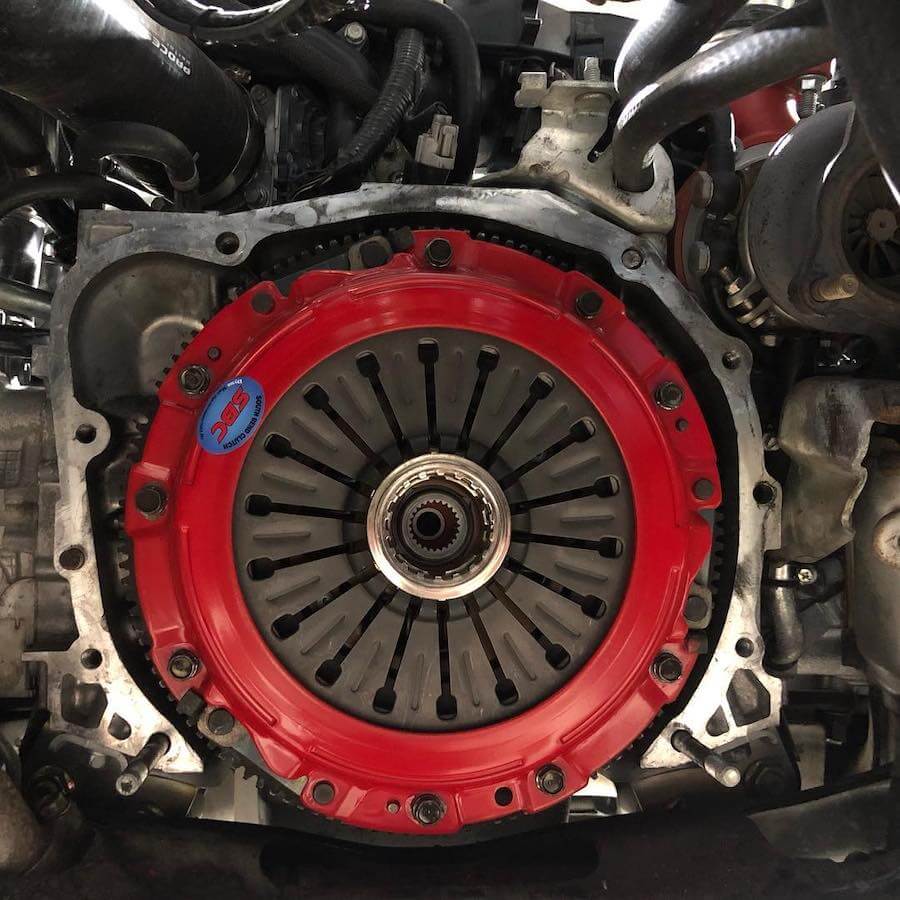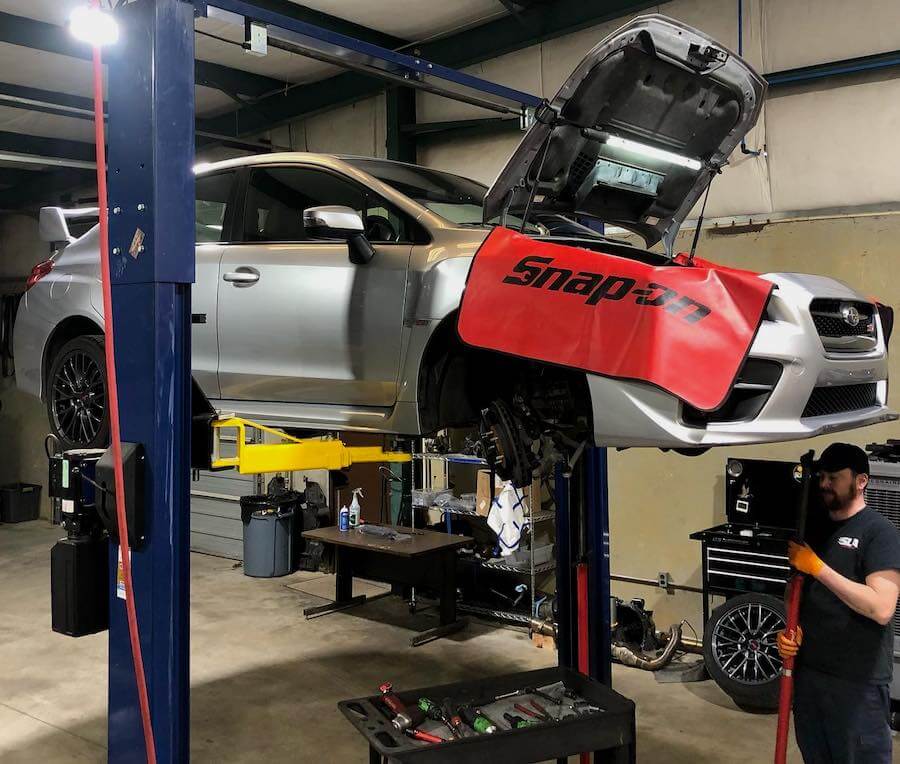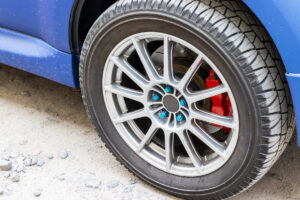People mostly associate a clutch with manual cars because the driver shifts gear manually. However, automatic cars also have clutches, which lie between the engine and the transmission. No matter whether you have a manual or an automatic car, it’s essential that you replace your clutch when necessary.
You should replace your clutch when it gets too worn to work properly. Most clutches will need to be replaced between 50,000 to 100,000 miles. However, you may need to replace your clutch sooner, depending on how you use your vehicle.
In this article, I will let you know what signs to look out for so you can determine when to replace your clutch. I will also explain how to lengthen the life of your clutch and what you should expect from your mechanic when you go in for problems with your clutch.
Signs Of A Failing Clutch
It’s unlikely that your clutch will fail without giving off a few signs. These signs give you time to drive to the mechanic before the failure gets worse, or you get stranded on the roadside with a failed clutch.
The following signs point to some type of clutch failure that needs specialist attention.
Slipping Clutch
The clutch slips when the friction plate fails to engage with the flywheel and instead spins. When this happens, it becomes harder to switch through gears.
A tell-tale sign of a slipping clutch is mismatched revs. This is when the car fails to accelerate proportionate to the revs you’re feeding the engine through the accelerator pedal. It happens because the clutch slips and fails to transfer engine power to the transmission.
The most common reason why clutch slippage happens is a worn friction plate. Other reasons include issues with the clutch linkage and contamination of the clutch assembly by transmission or engine oil.
Diagnosing clutch wear is relatively simple. You’ll need to park your car where it won’t cause damage if the clutch engages.
With the car stationary and the engine on, shift to third gear and slowly lift your foot off the clutch while depressing the accelerator. If the car stalls once you get to the load point, the clutch isn’t worn out.
If the car fails to stall past the loading point, you have a worn clutch plate.
Alternatively, you can have your mechanic check it out for you.
Grinding Noise
Gear shifts in your BMW or Subaru should be seamless and noiseless. Any unusual noise during shifting or from the gearbox usually indicates that there’s something wrong.
At times the noise disappears when you depress the clutch pedal and returns when you disengage. This noise usually points to a worn clutch bearing.
It’s an inexpensive repair but can cause clutch fork damage if not repaired swiftly. If you ignore the bent clutch fork, you’ll end up having to pay for a new clutch.
A grinding noise can also be indicative of low lubricant. Wet clutches are usually bathed in lubricant to facilitate transmission, and low lubricant levels will affect the way your clutch functions.
Some believe that wet clutches reduce power transmission, but most agree that they are more durable. When the fluid on a wet clutch dries up, you will hear a grinding noise when shifting.
Loose, Spongey, or Hard Clutch Pedal
Changes to the feel of your car’s clutch pedal can point to an issue with your clutch.
A loose, spongey, or stiff clutch pedal points to issues with the clutch’s release mechanism. Most Subarus and BMWs use a hydraulic clutch system that transmits clutch pedal inputs to the clutch.
A leak or fault in the system can cause changes to the clutch pedal’s feel. If there’s a leak, you need to consult your mechanic immediately to identify the leak’s source.
Similarly, an issue with the clutch’s release mechanism should be diagnosed as soon as possible.
Such issues aggravate over time, destroying more parts in your clutch system, thereby increasing repair costs.
Car Shudder
You will likely experience a car shudder when launching a car with a worn clutch or a clutch that is in the process of wearing down.
A car shudder that persists at low speeds is indicative of a wearing clutch. If you’re in a traffic jam and the car keeps shuddering as you release the clutch pedal, you need to get that clutch checked out.
If the shudder resolves itself after driving for a while, you need not worry about the clutch.
Shuddering usually points to contamination of the clutch system or the wearing of the clutch plate. Contamination can come from oil or sludge collected from rainy weather.
Trouble Shifting
If you start experiencing trouble getting your car into gear, your car’s clutch might need replacement.
A car sticking in gear might signal a problem with the linkage system. In hydraulic systems, non-responsive shifts might point to a cylinder problem.
This problem is usually accompanied by a change in clutch feel. Two clutch failure symptoms point to a clutch that is on its deathbed.
If you drive an automatic Subaru or BMW, you will feel your car strain to move to the next gear even when you give it sufficient revs. Your car’s shifting problems might point to a worn clutch.
Unusual Smell Or Leakage
That characteristic clutch smell comes from metal components in the transmission grinding against each other without lubrication.
The smell comes from the heat produced by extra friction. Extra friction increases wear rate, damaging clutch components faster than usual.
A red, brown, or black fluid pooling under your car might point to a transmission issue. The leaking fluid might be clutch fluid, which points to a fault in your clutch system.
Your BMW or Subaru shouldn’t leak any fluids. If there are any leaks, make sure to get them checked by a trusted professional.

How To Lengthen The Life Of Your Clutch
The longevity of your Subaru’s or BMW’s clutch depends on how well you treat it. Your clutch might not make it to 50,000 miles if you fail to take care of it. On the other hand, your clutch can last for over 100,000 miles if you treat it appropriately.
When driving, make sure that you shift gears at the right moments. Shifting at the wrong revs will increase your clutch’s wear rate.
Additionally, you should avoid engaging the clutch needlessly. For example, when stationary, place the car in neutral and engage the handbrake rather than depressing the clutch the whole time you remain stationary.
You should always ensure that the clutch is fully engaged or released when driving. Placing your foot on the clutch as the car moves will only increase the clutch’s wear rate.
Ensure that you accelerate after the gear has fully engaged and your foot is entirely off the clutch pedal.
Unfortunately, there are conditions beyond your control that wear your clutch faster. For example, city driving that involves frequent lower gear shifting will wear the clutch faster.
Similarly, driving in hilly areas which frequently require lower gears will wear your clutch out faster. A Subaru or BMW driven in the hilly northwest Arkansas regions will likely wear its clutch faster than a similar car driven in the lowlands of southeast Arkansas.
Pulling heavy loads using your car stresses the powertrain and can increase clutch wear. Also, an older car will wear its clutch faster than a new car.
Arkansas’ long and hot summers don’t do your clutch system any favors: clutch fluid heats up in high temperatures, becoming less efficient.

What To Expect From Your Mechanic If You Report A Clutch Issue
If you suspect that your car has a clutch issue, report the problem to your mechanic. Call first to find out whether it’s safe to drive the vehicle to the workshop.
The mechanic will first determine the cause and severity of clutch issues in your BMW or Subaru. The cost of clutch repair in your car will depend on the extent of clutch damage.
If you have a smaller issue, such as bearings that need replacement, the process will be quick and relatively cheap. However, if the damage is extensive, you’ll need to buy a new clutch, which can be expensive. It is, therefore, essential that you report a potential clutch issue as soon as you notice it.
The complexity of your car’s clutch system might raise repair costs. For example, dual mass flywheels cost more to replace as they are more complex.
These flywheels feature two flywheels connected via a series of springs. They reduce vibration in vehicles producing high torque. Many professionals advise that you should also replace the clutch while replacing the flywheels, further increasing repair costs.
You might be tempted to change to a solid flywheel configuration to save on repair costs, but I advise you to refrain from doing so. Switching to a solid flywheel might significantly increase the vibrations from your clutch.
Before you replace such a clutch, consult your mechanic to get a better idea of the pros and cons of replacement.
Final Thoughts
Your clutch will wear out sooner or later, no matter how well you treat it. However, before this happens, it will send you signals that something is wrong so that you can get it fixed before the issue becomes severe.
Contact or visit your mechanic as soon as you notice any of the tell-tale signs described above.
The cost of clutch repair in your Subaru or BMW will depend on the severity of damage and the complexity of the car’s clutch system.



